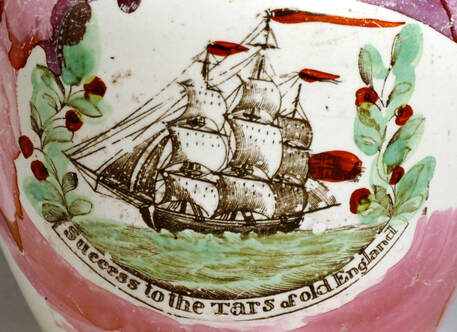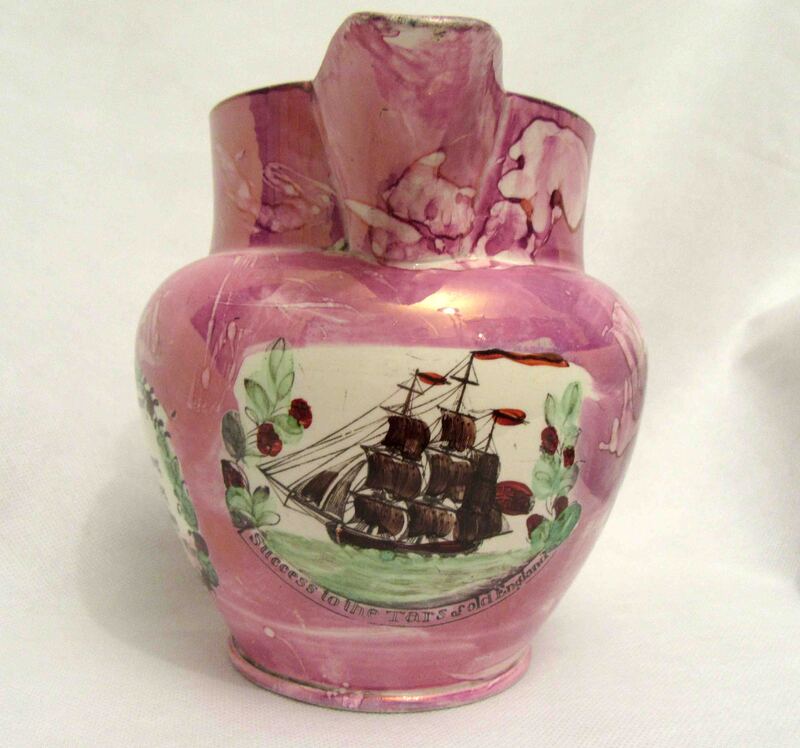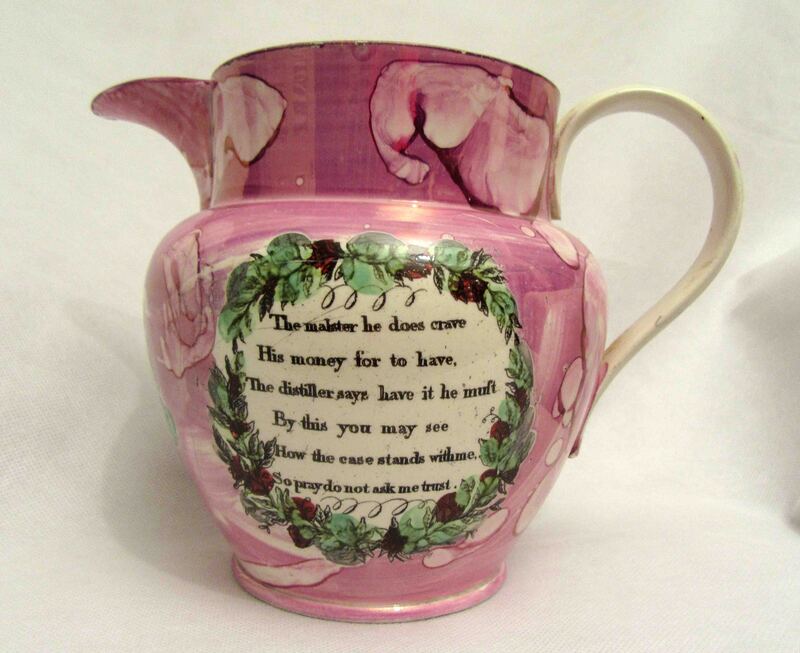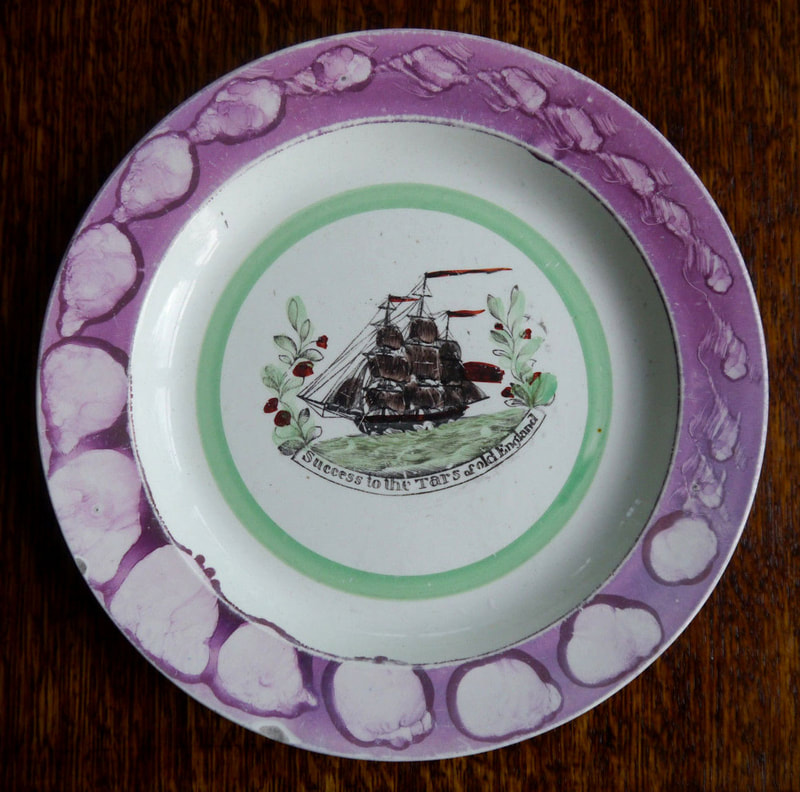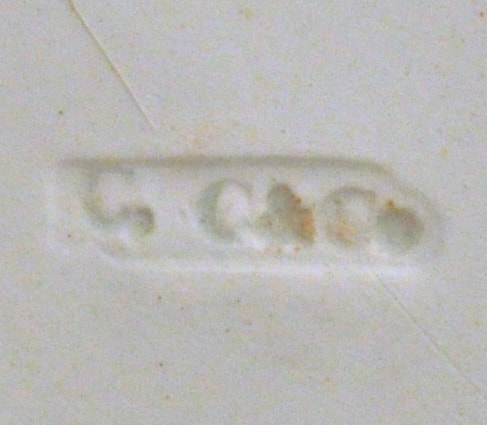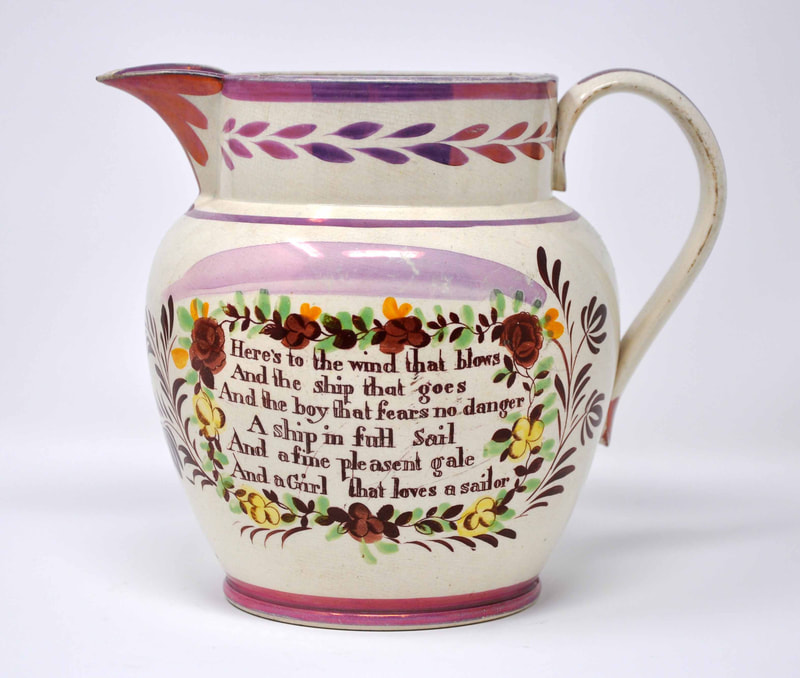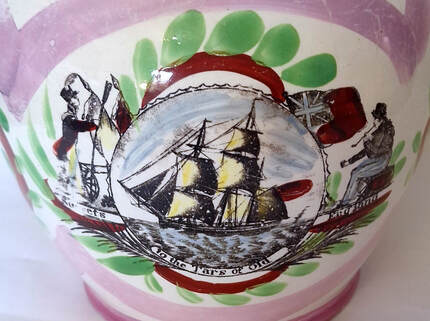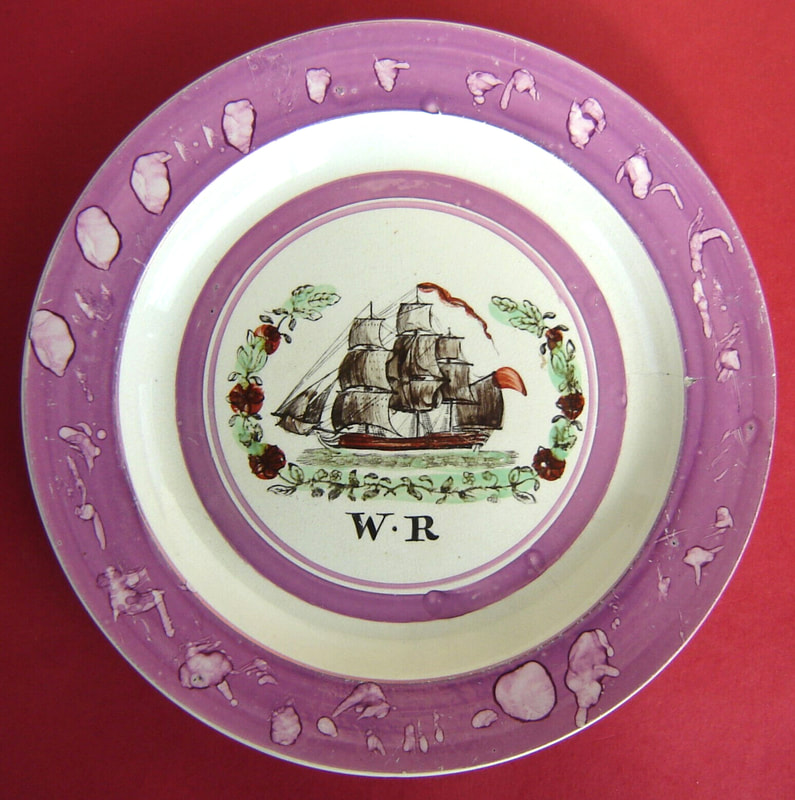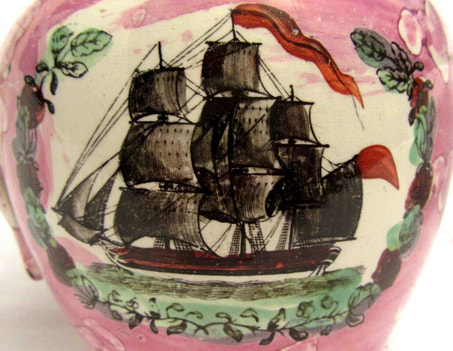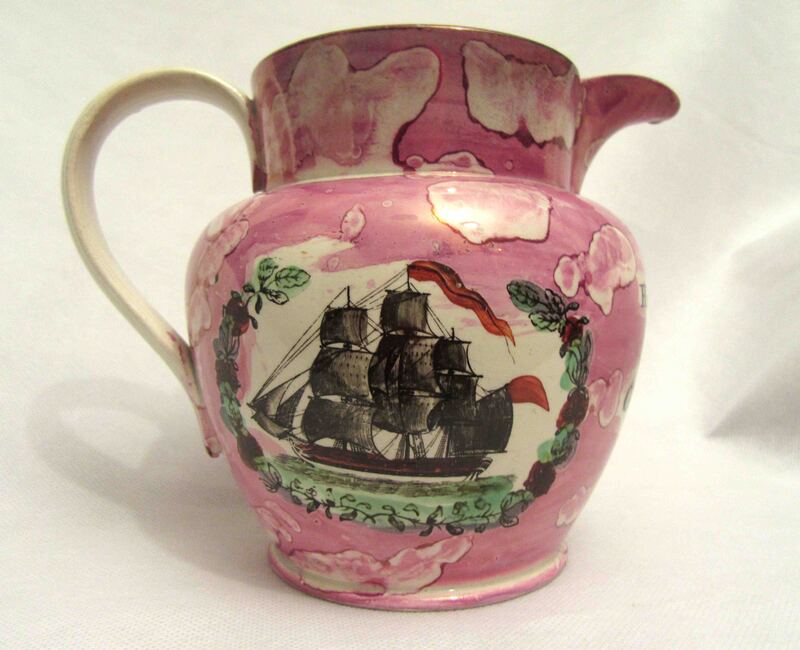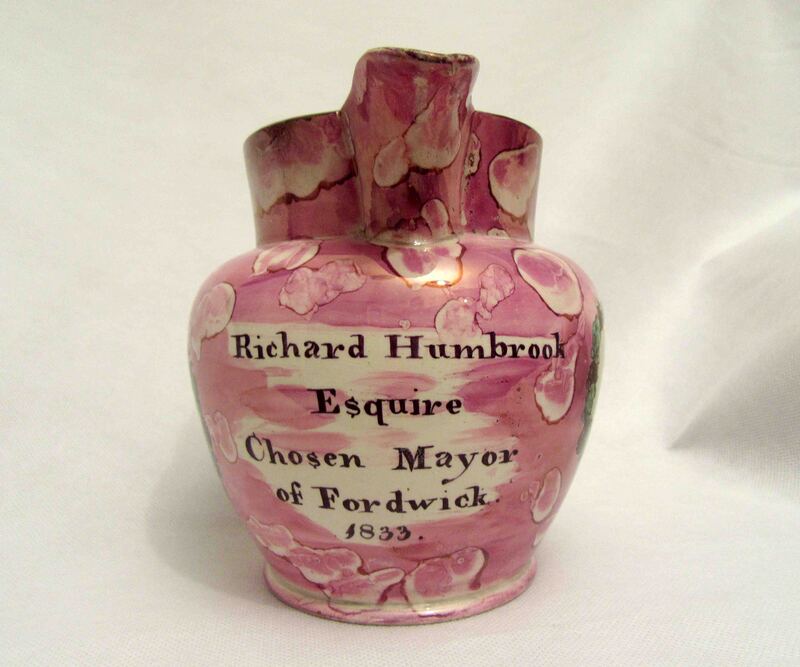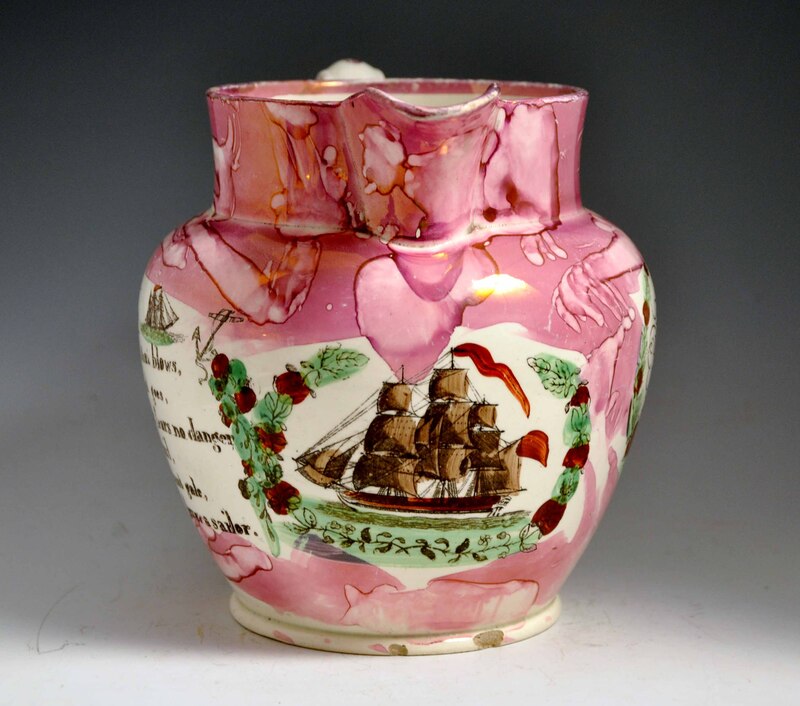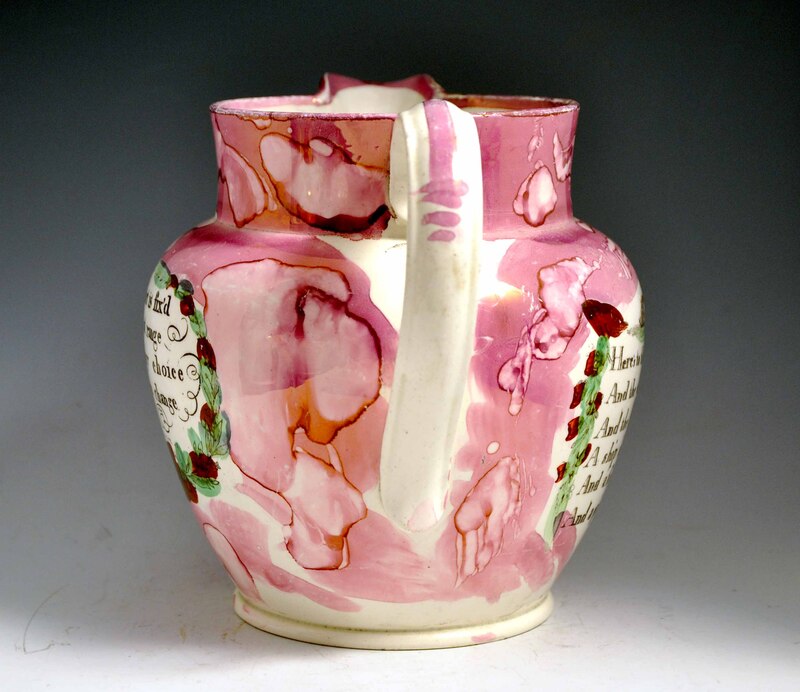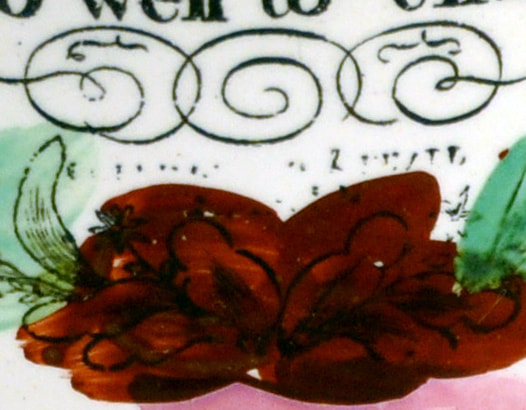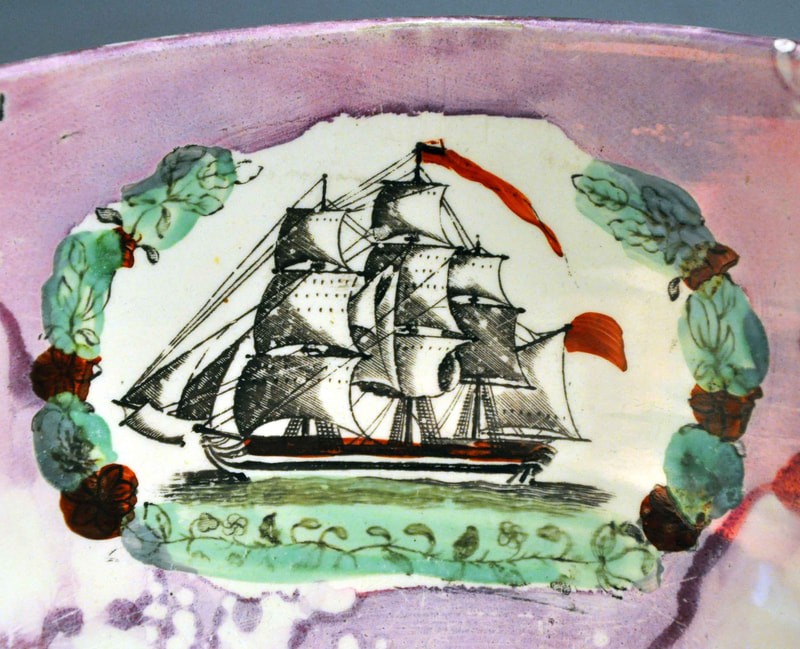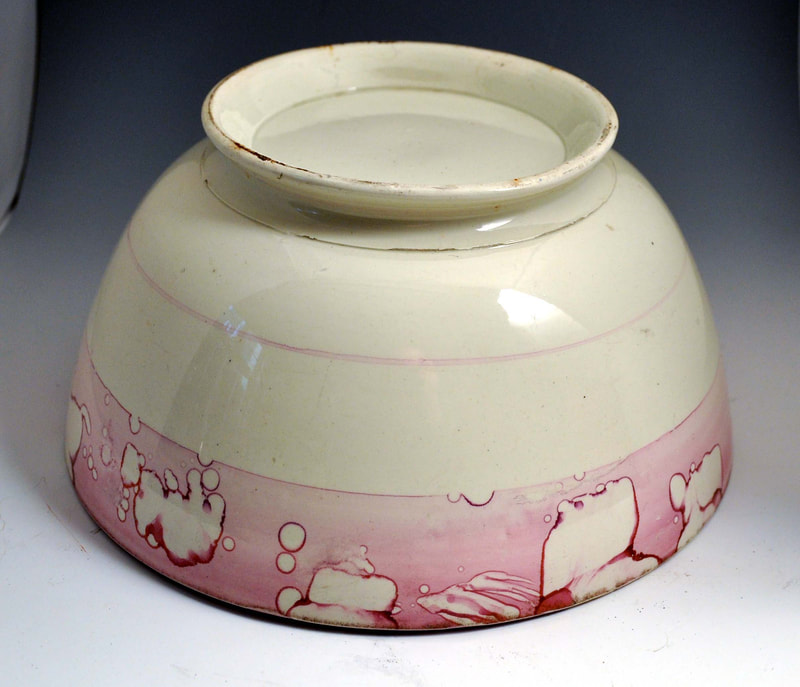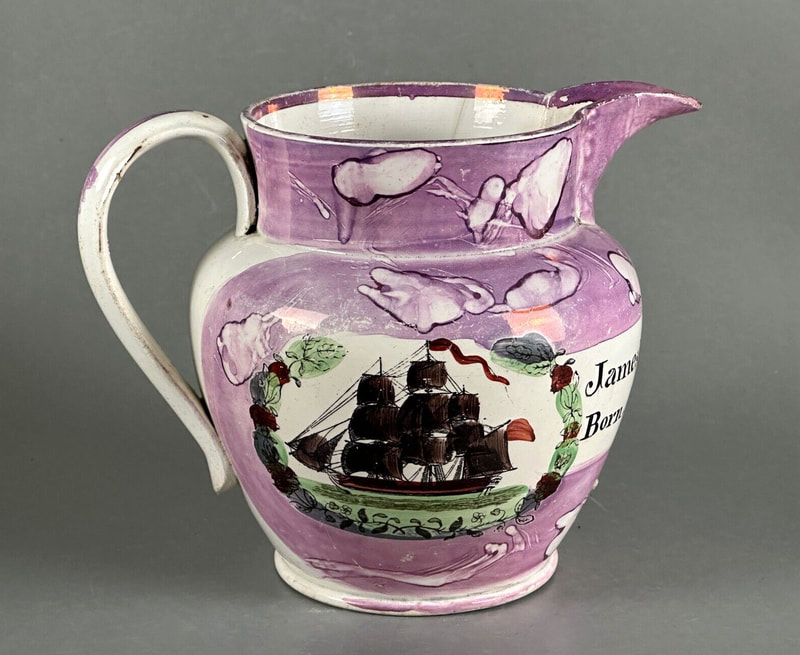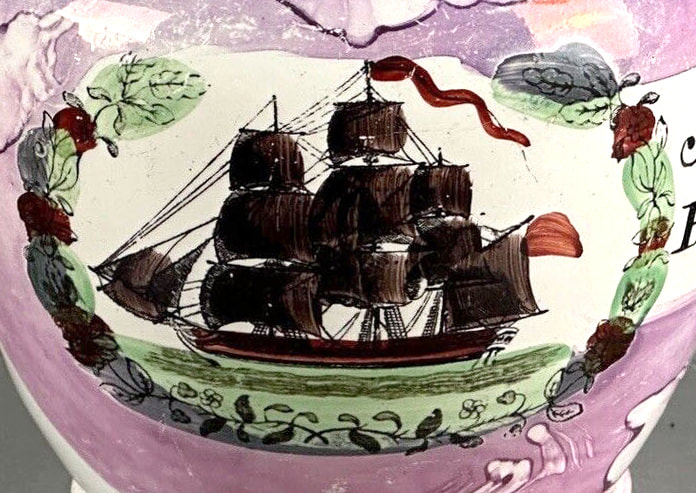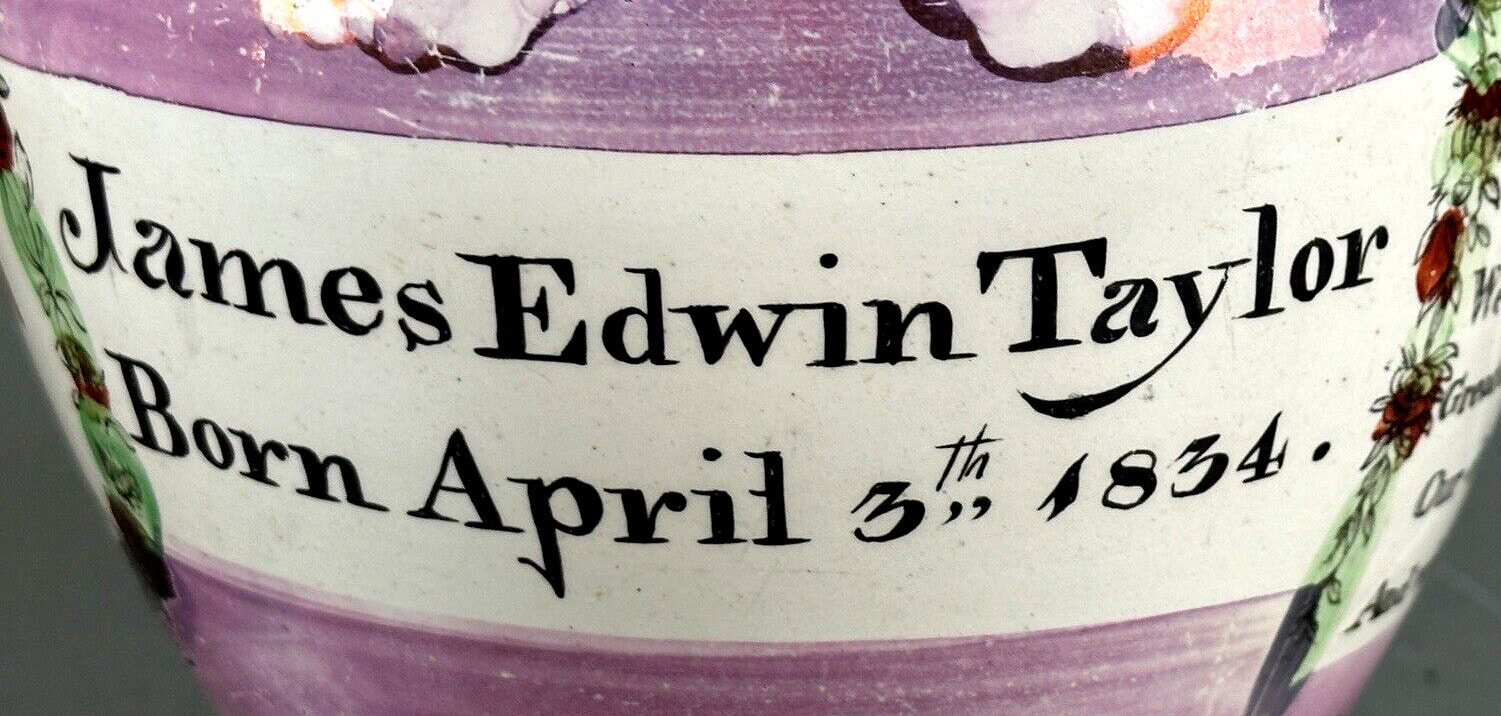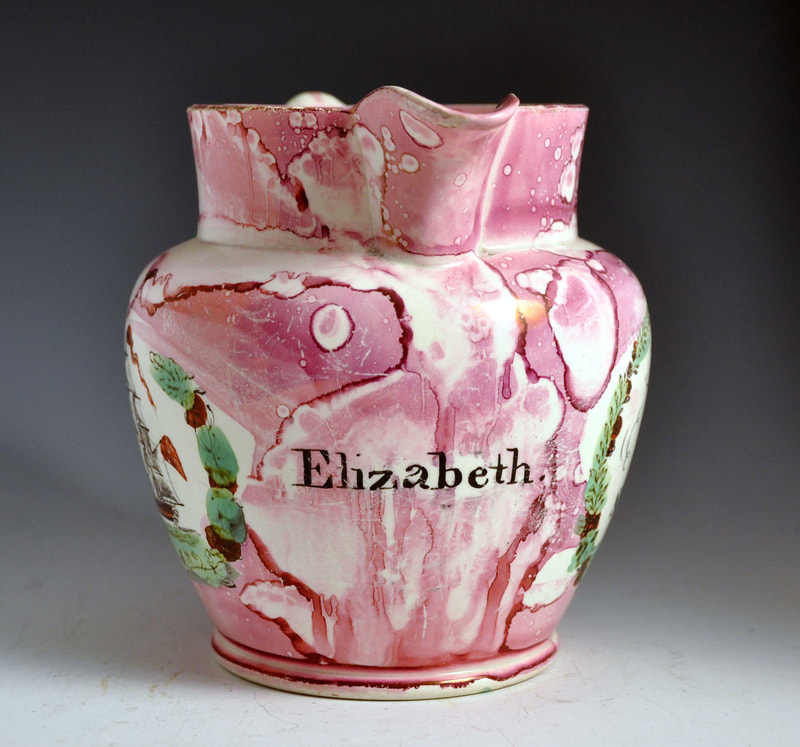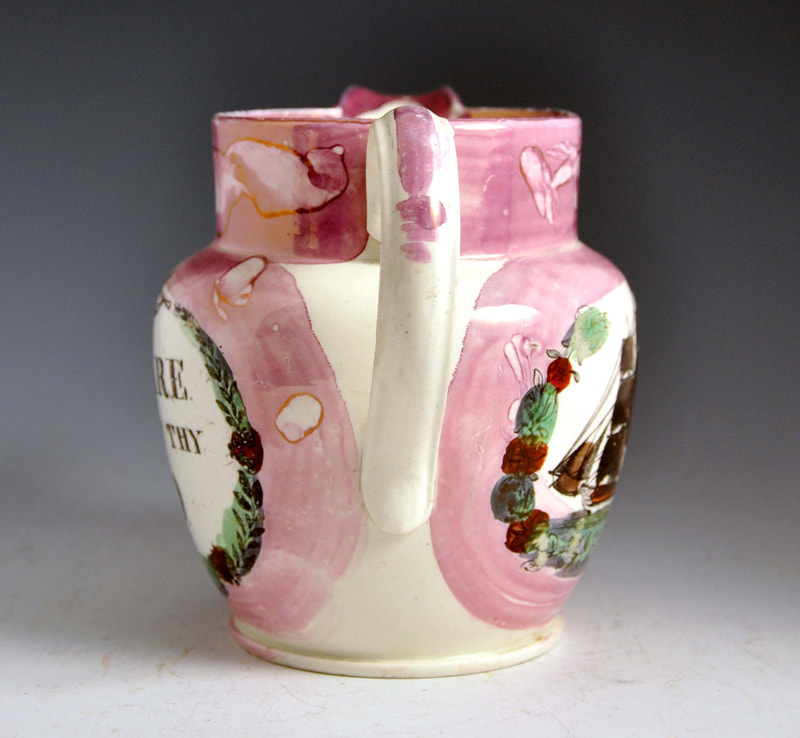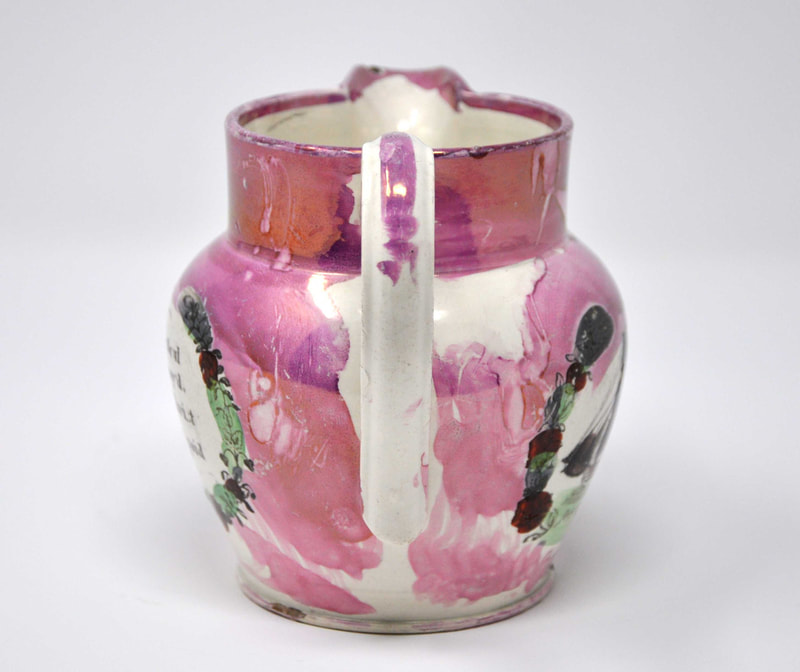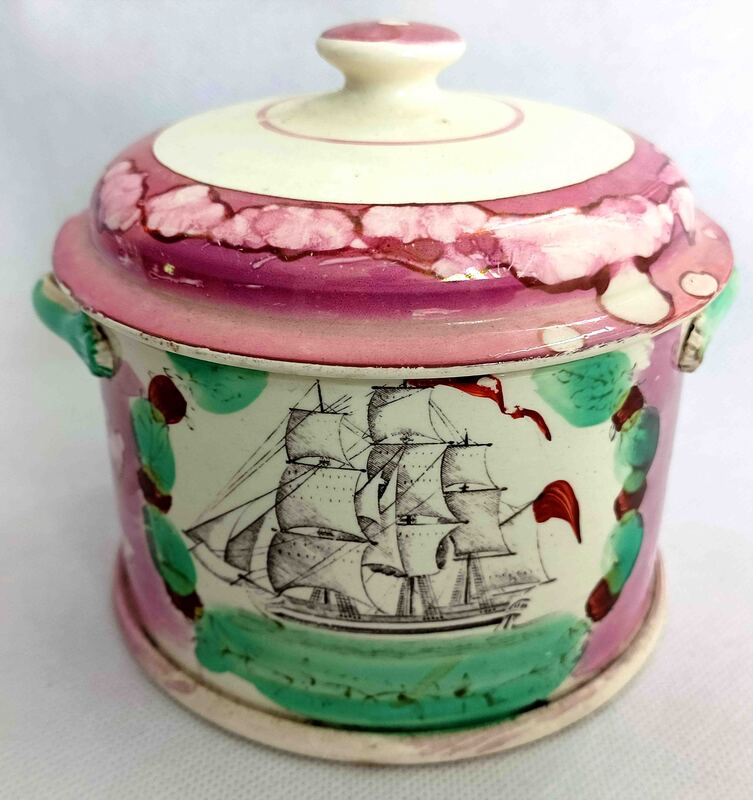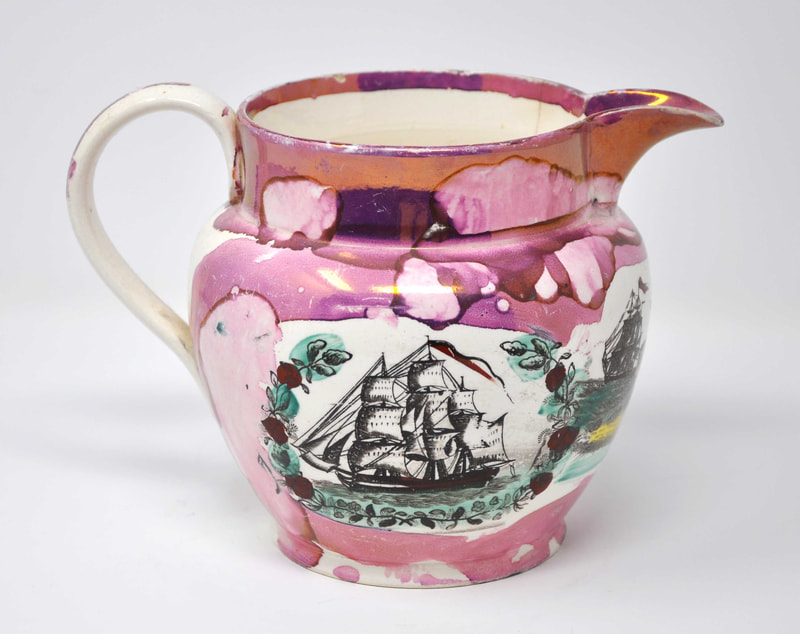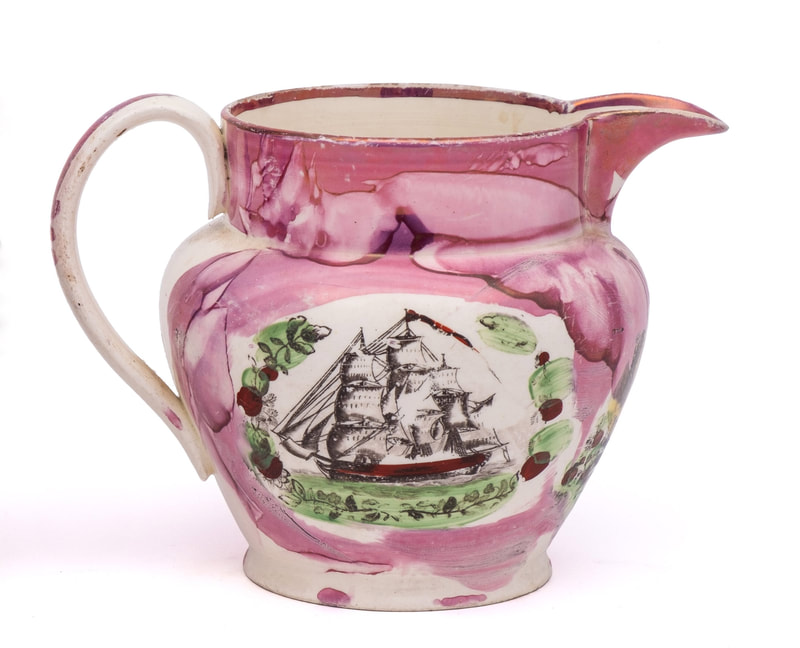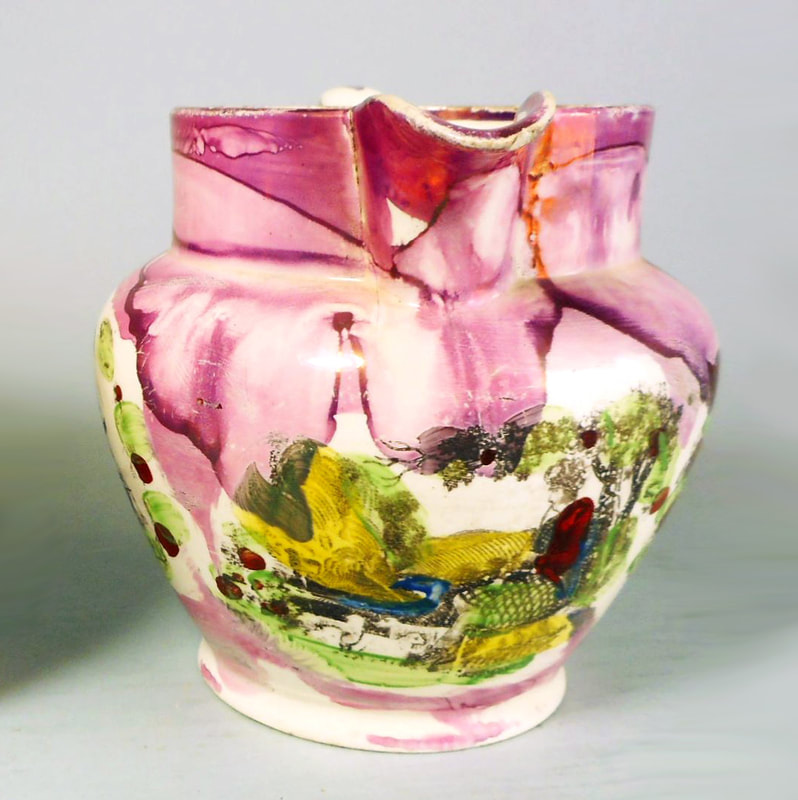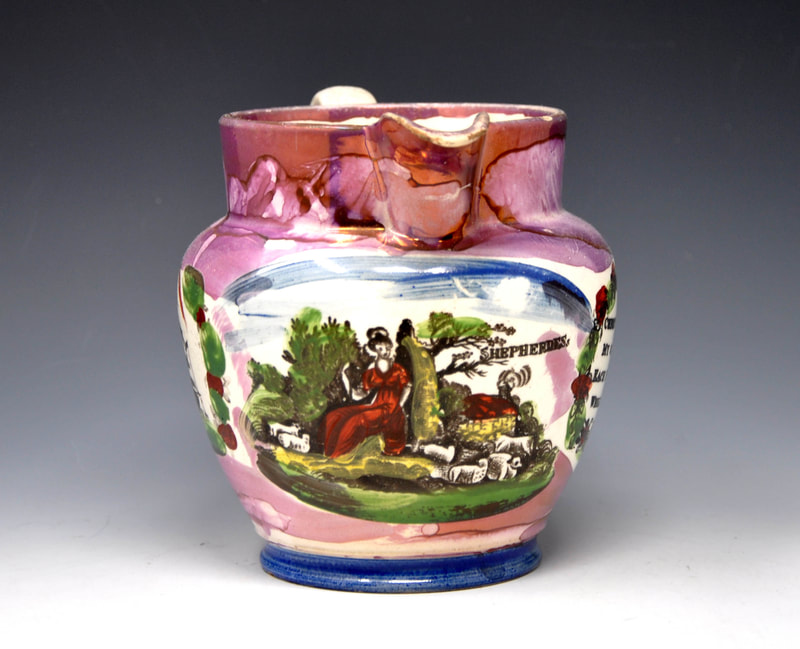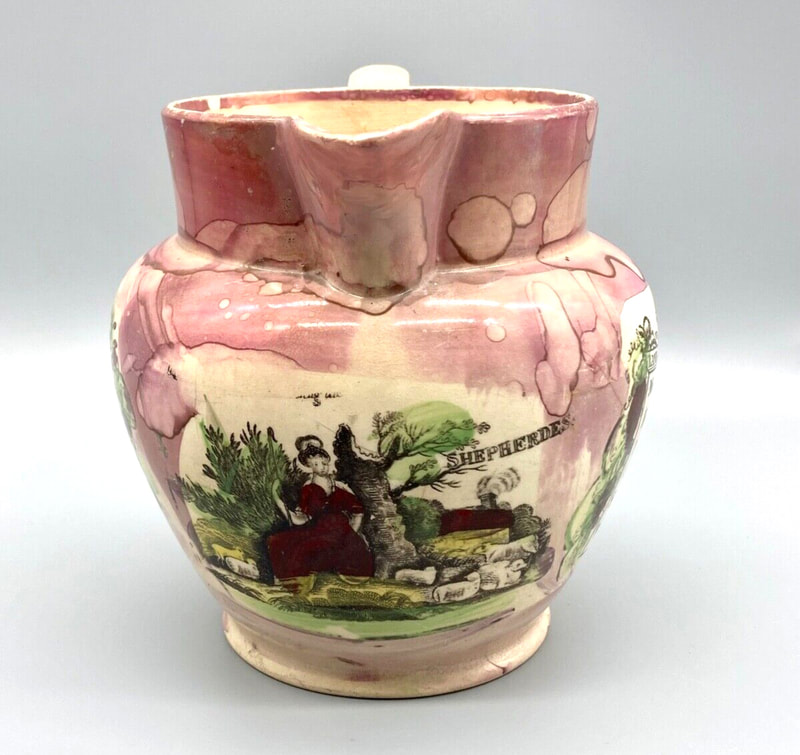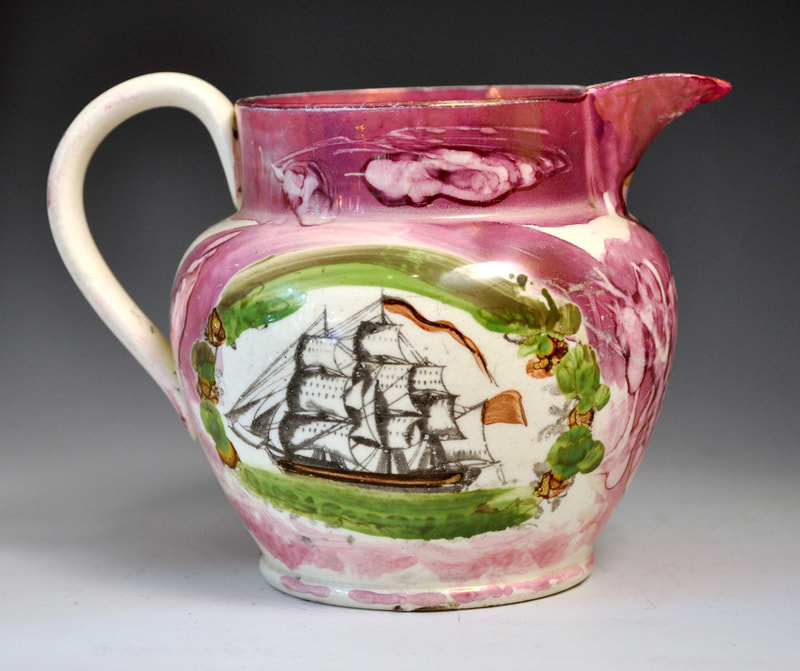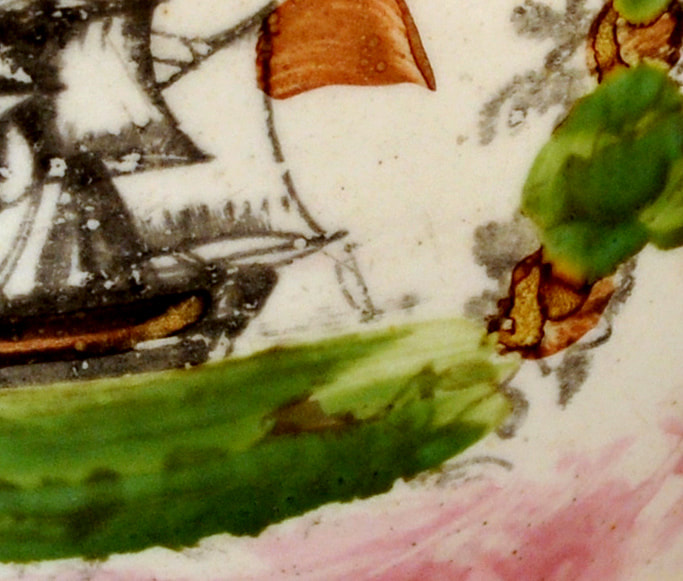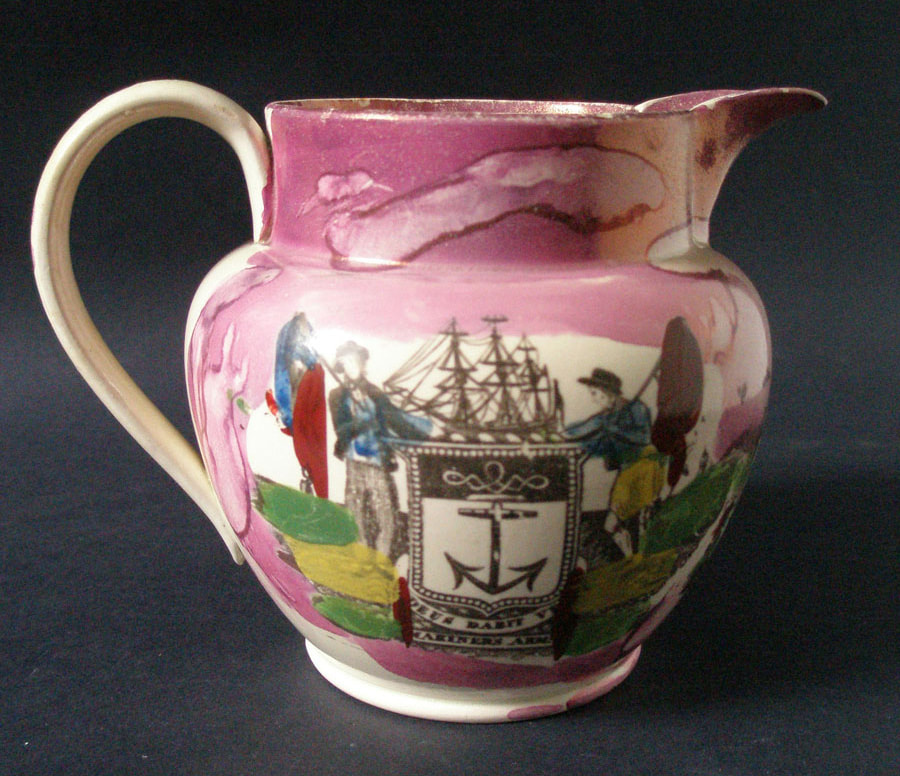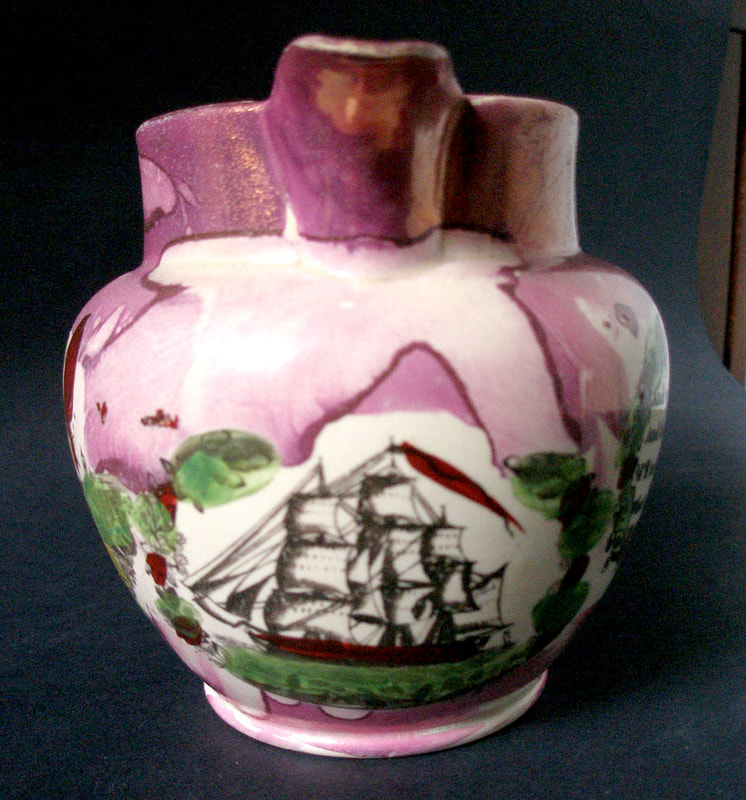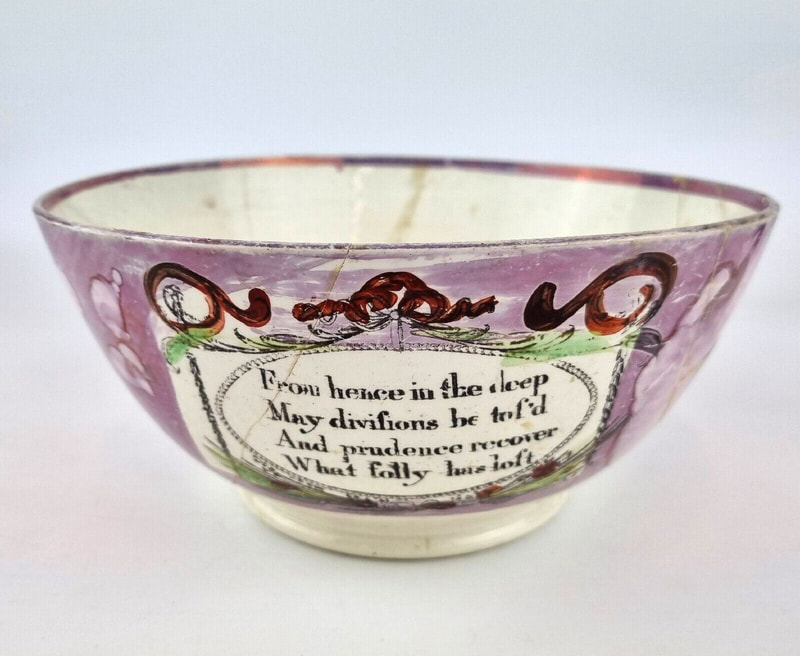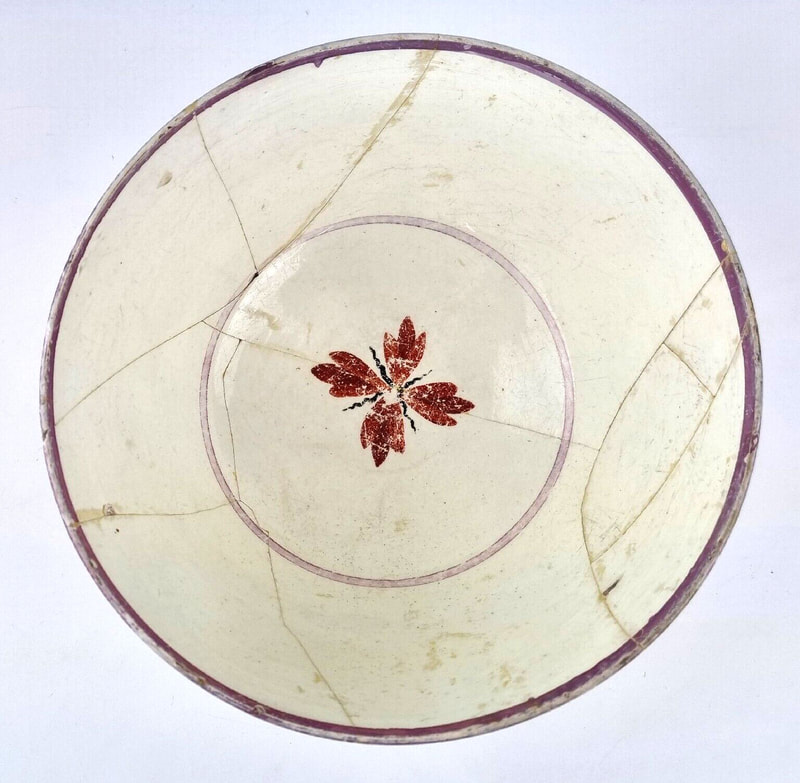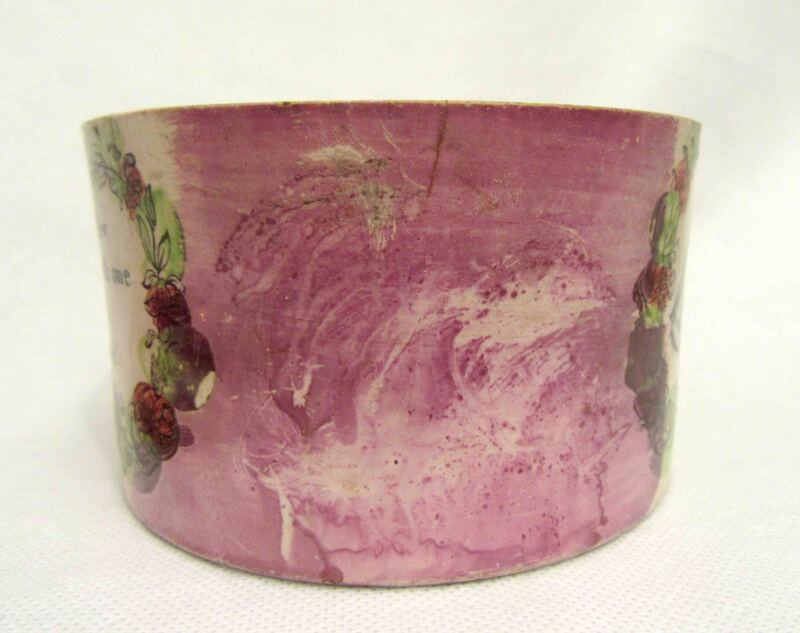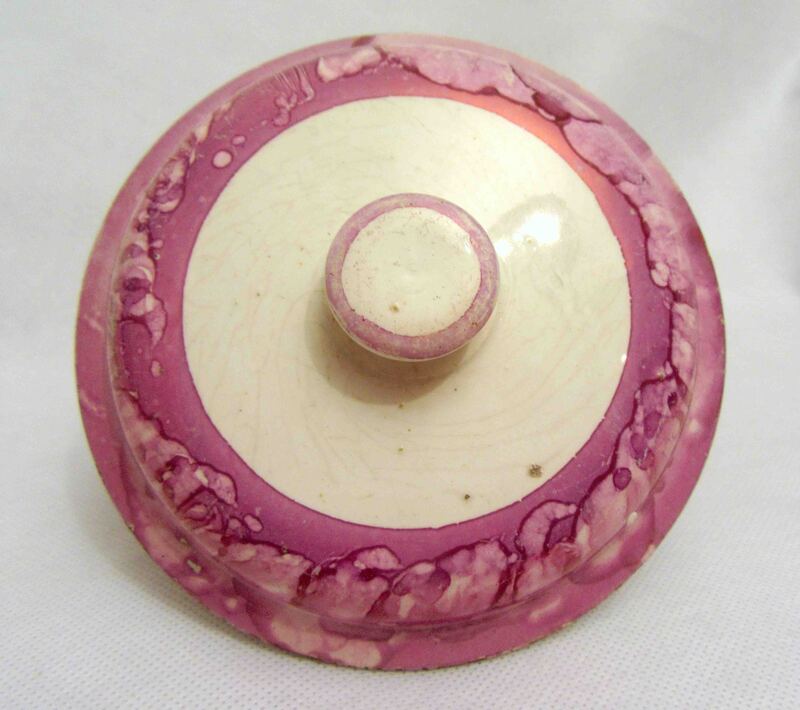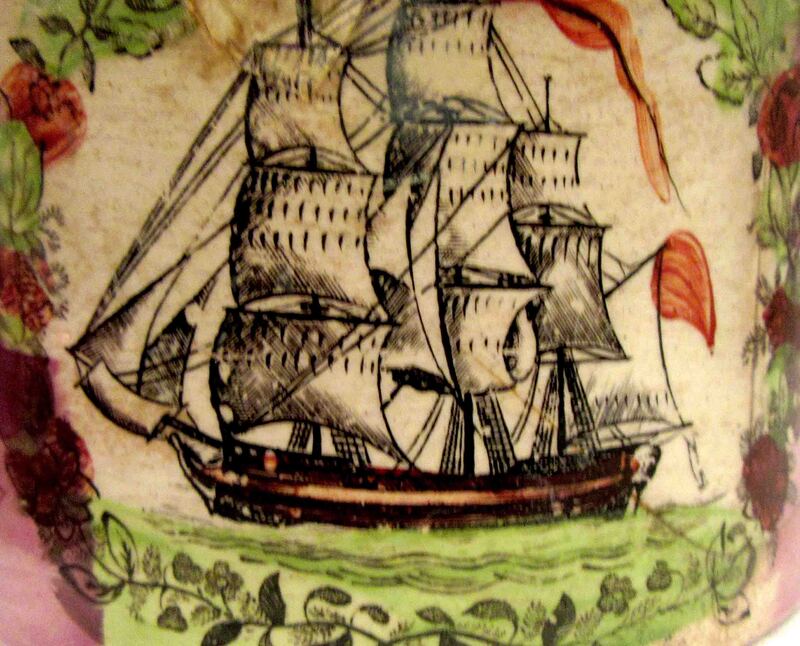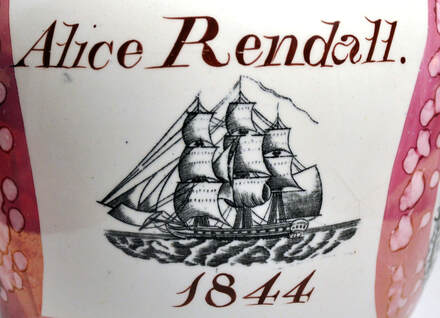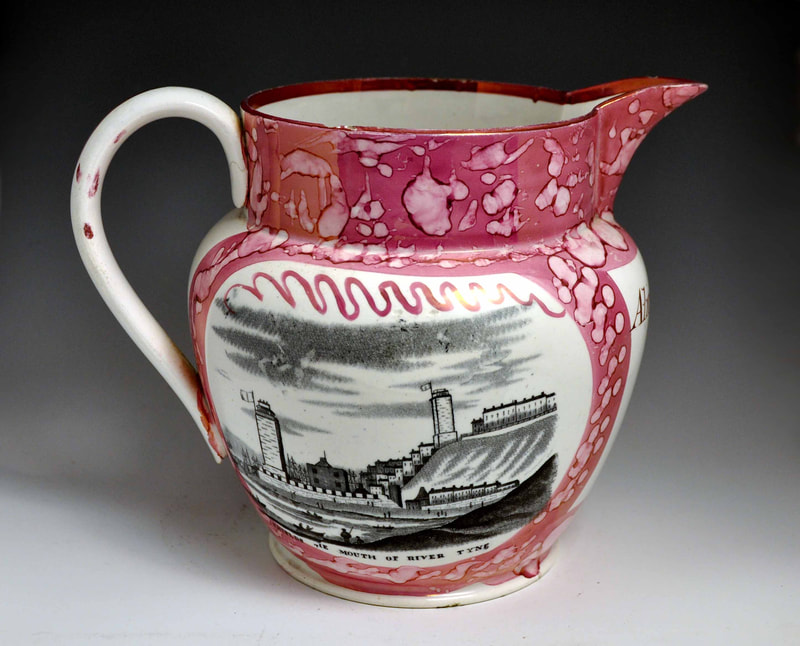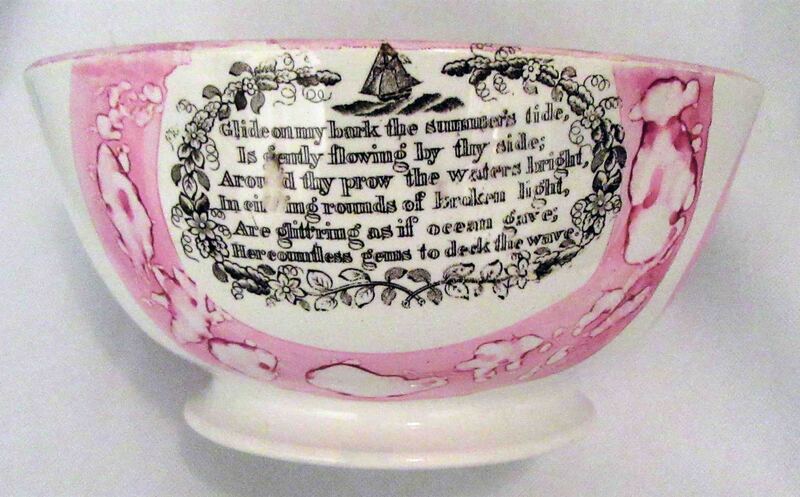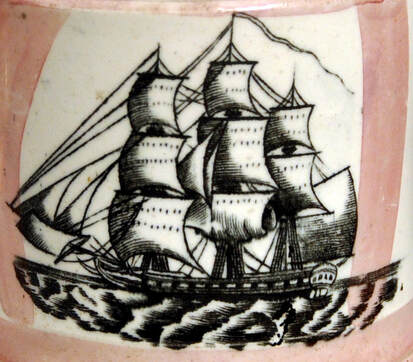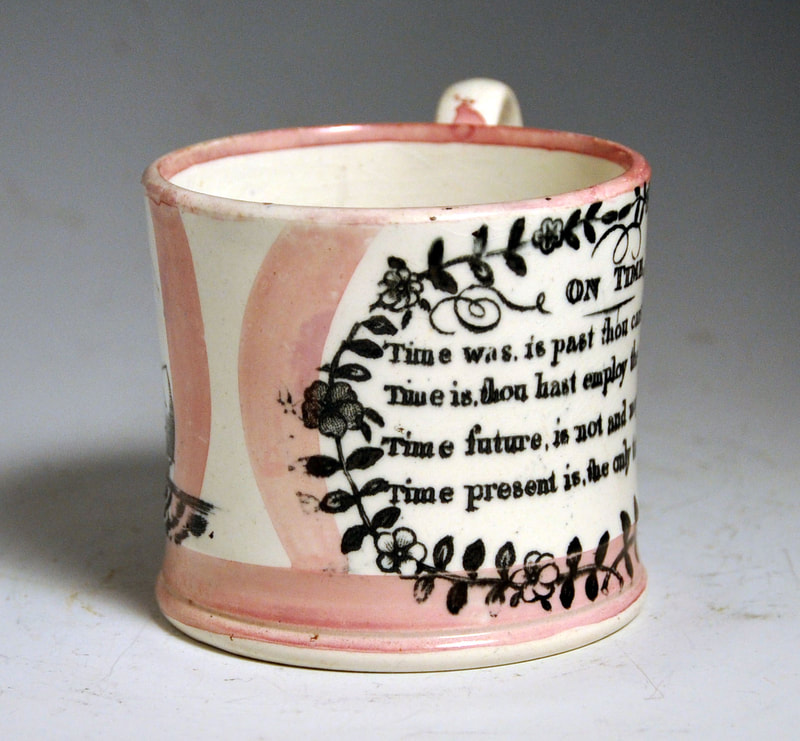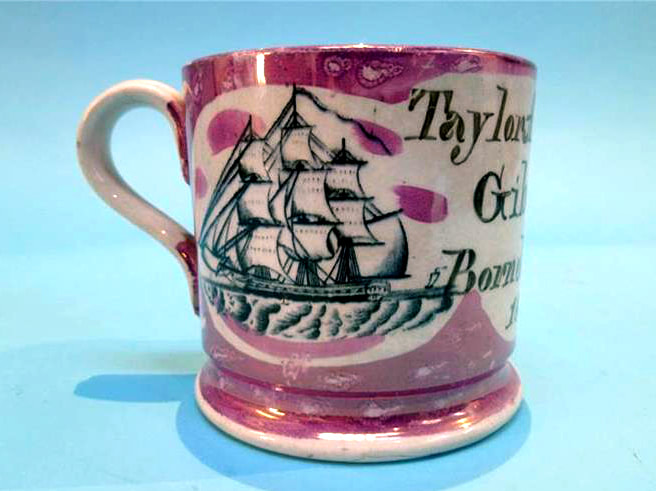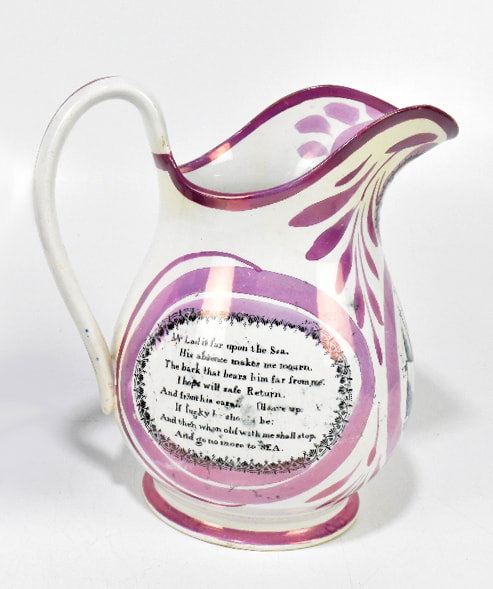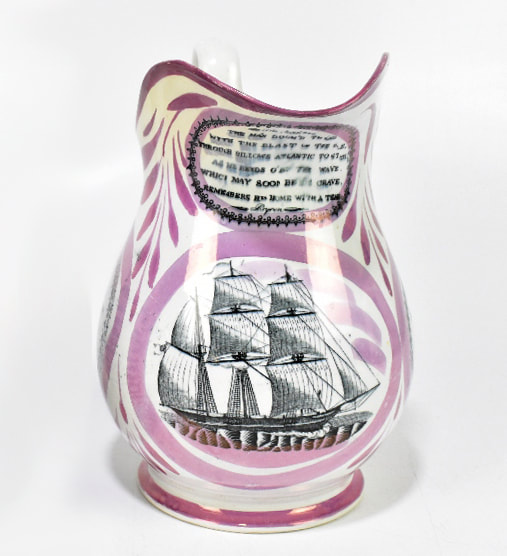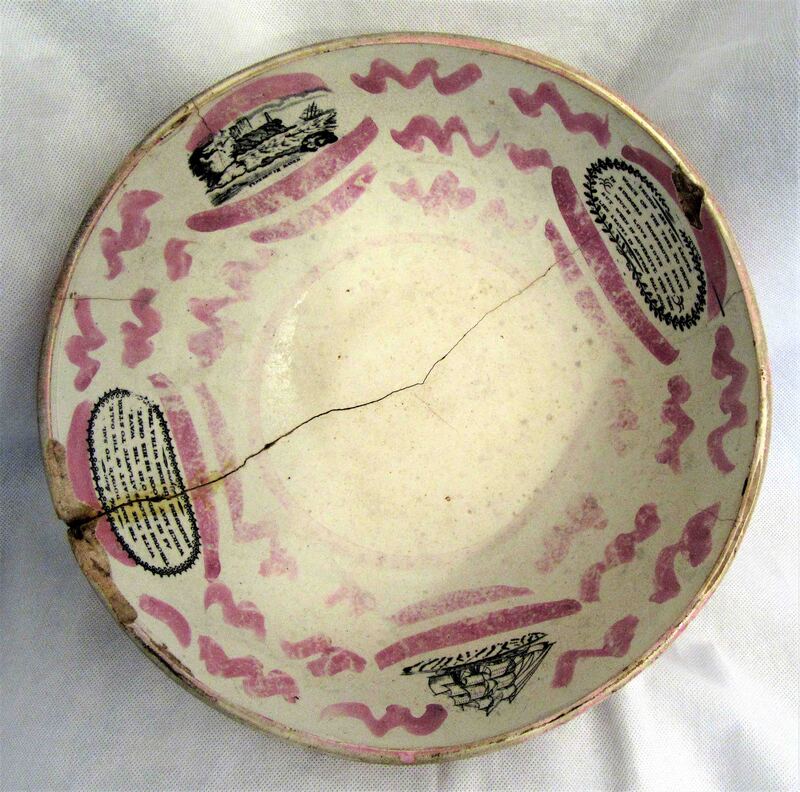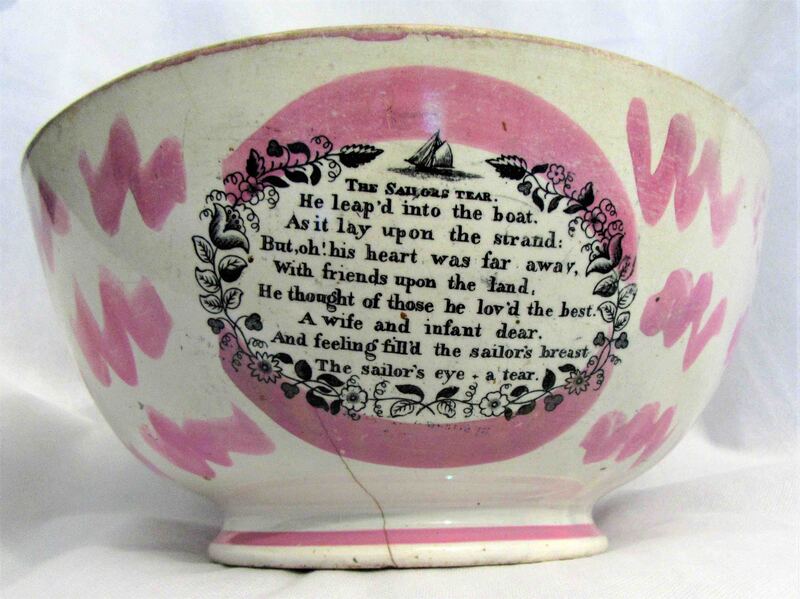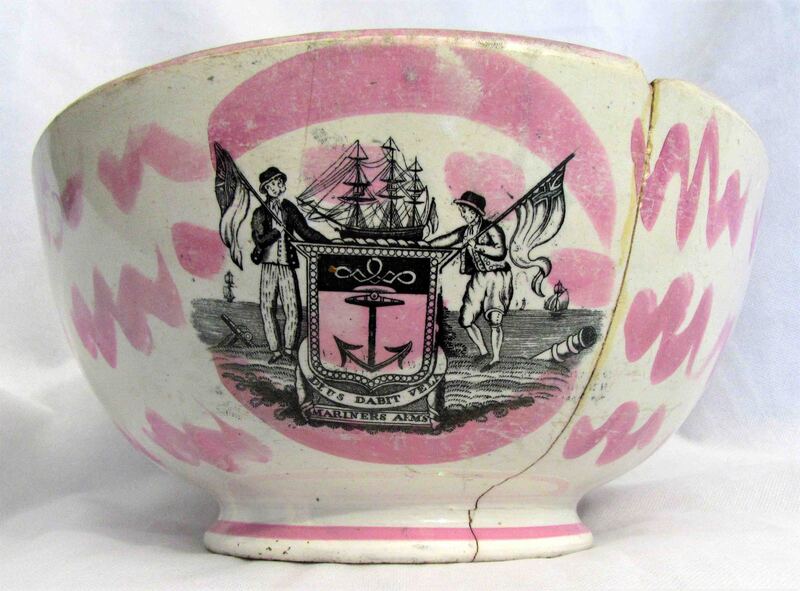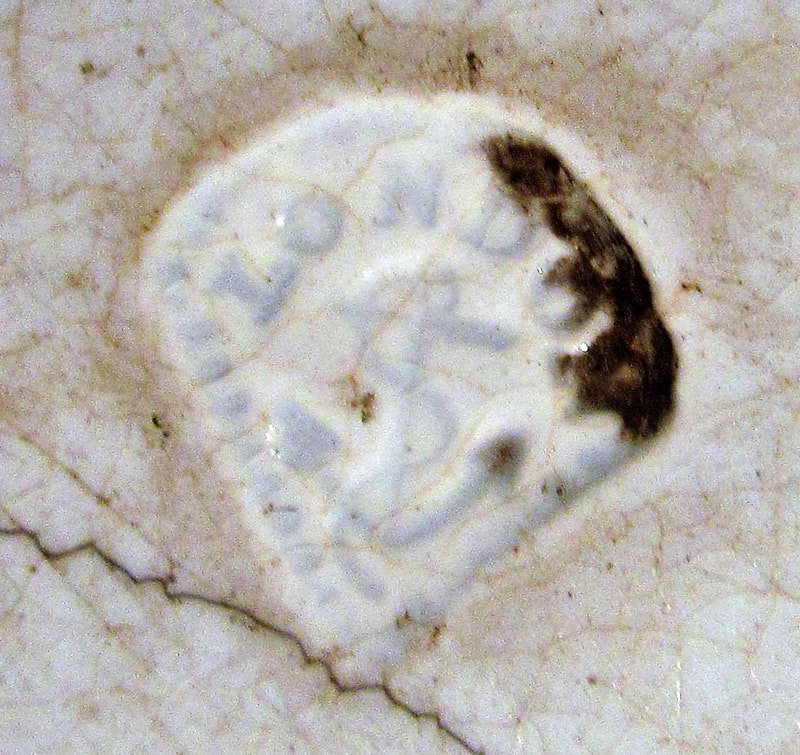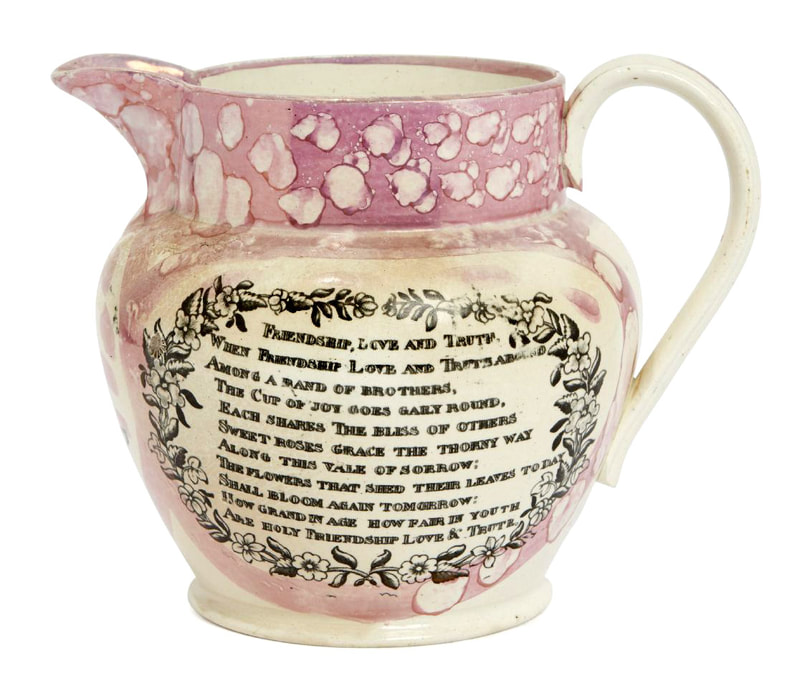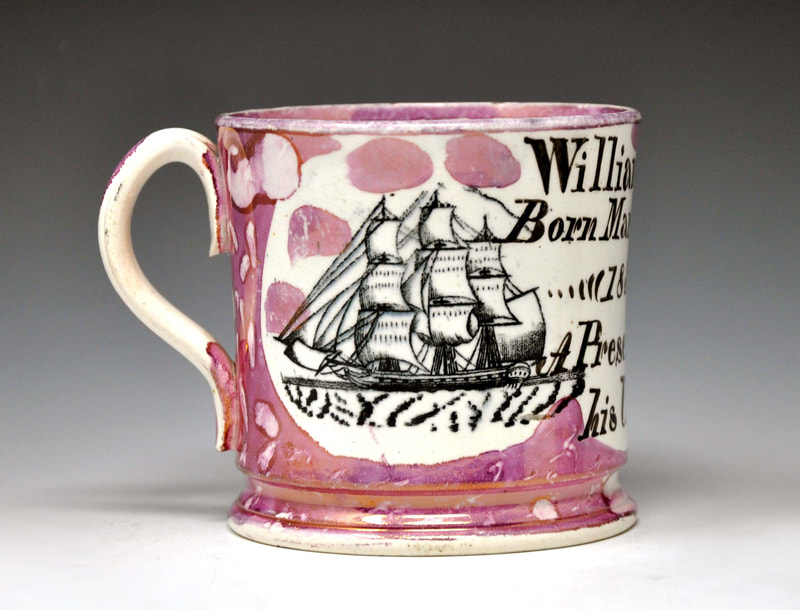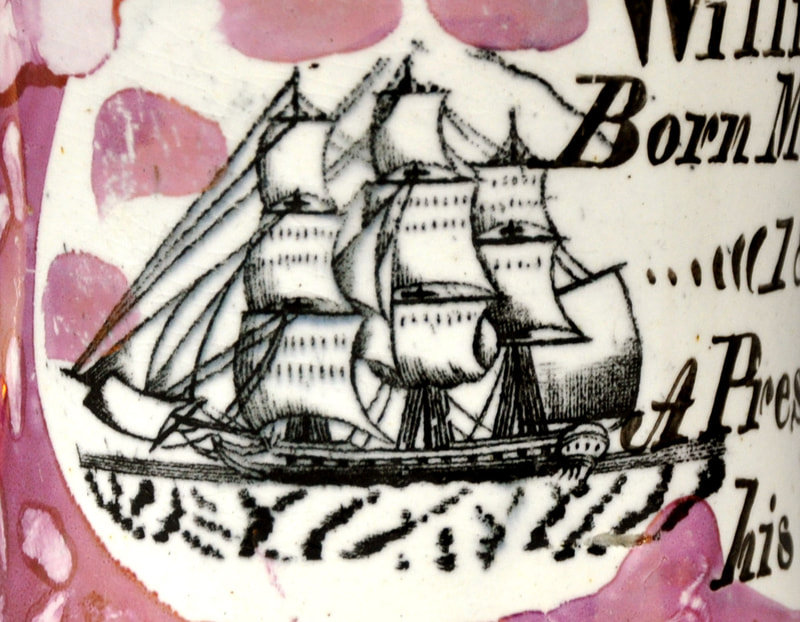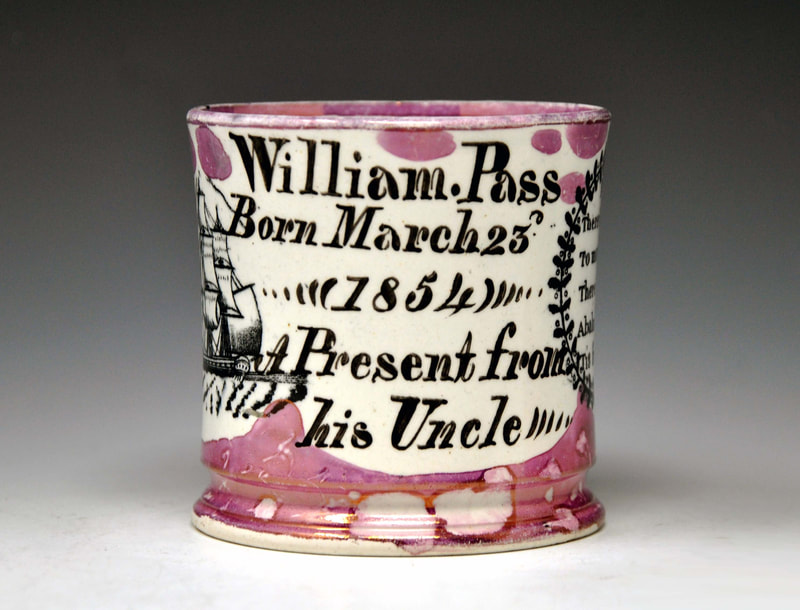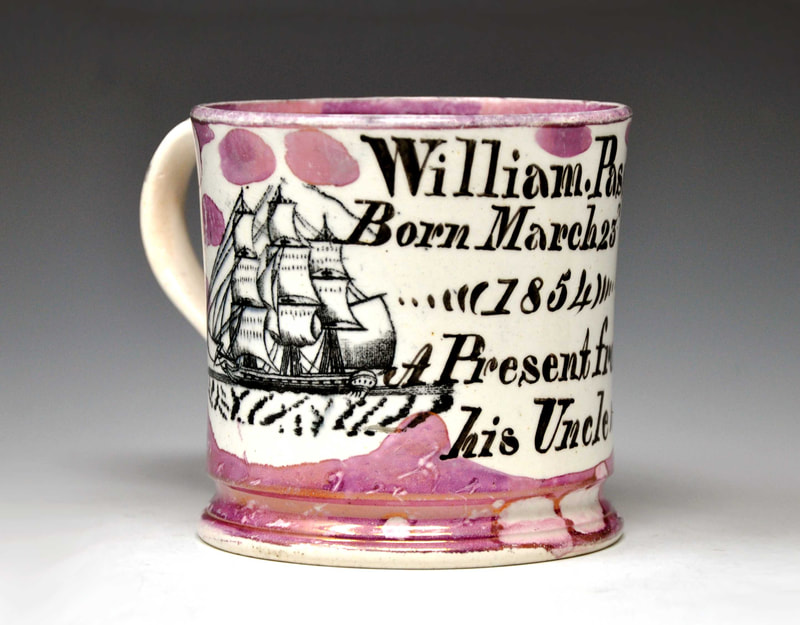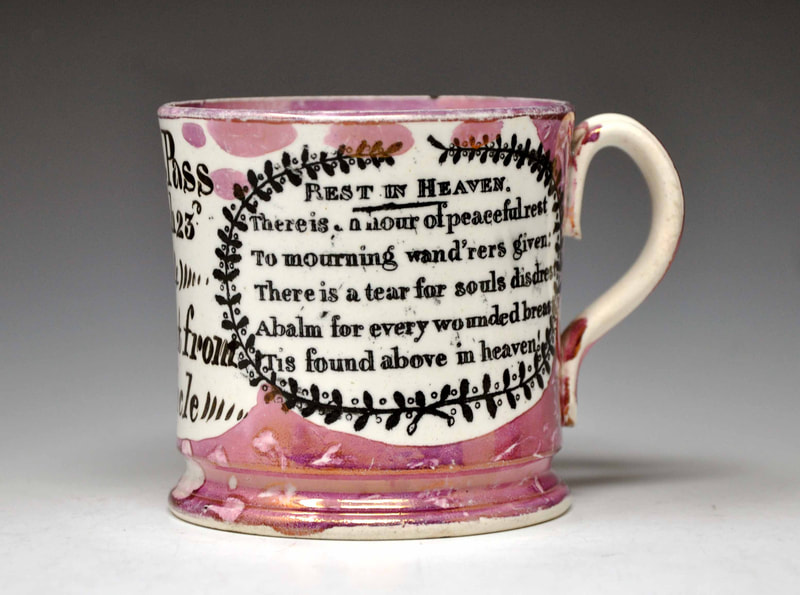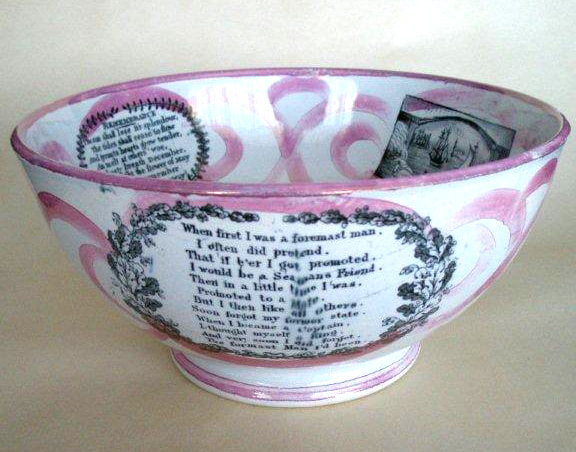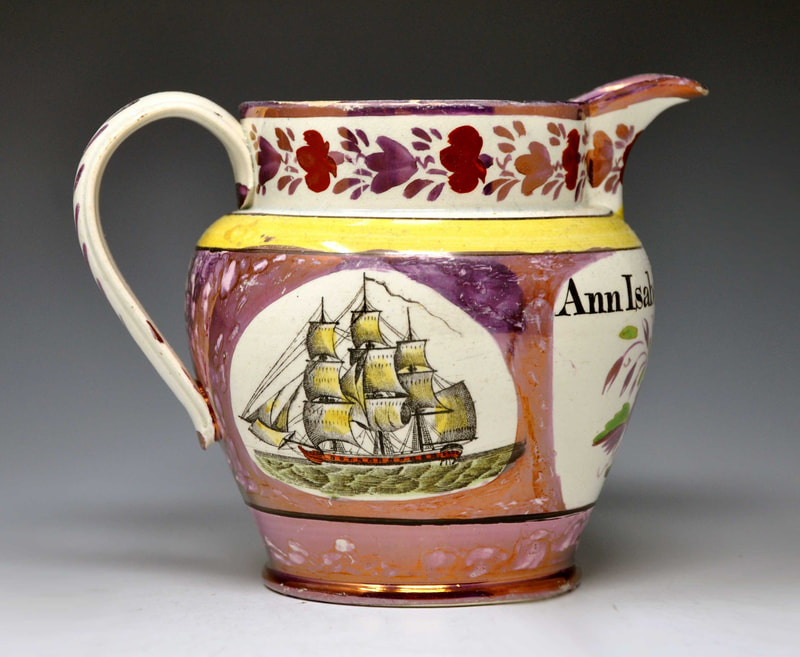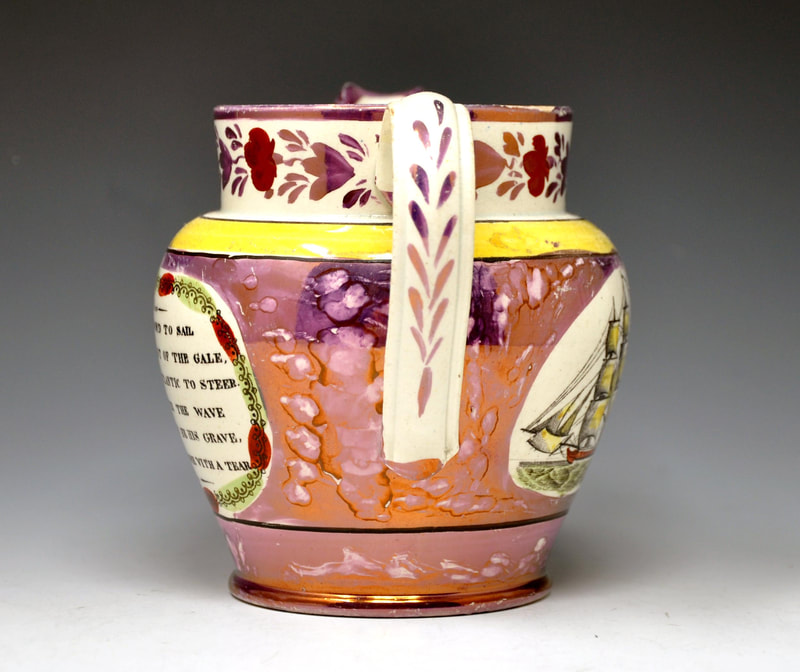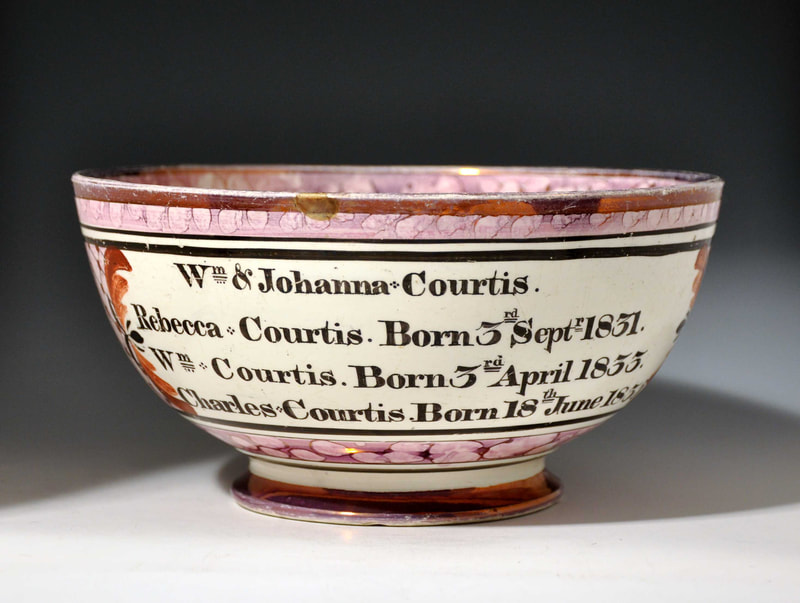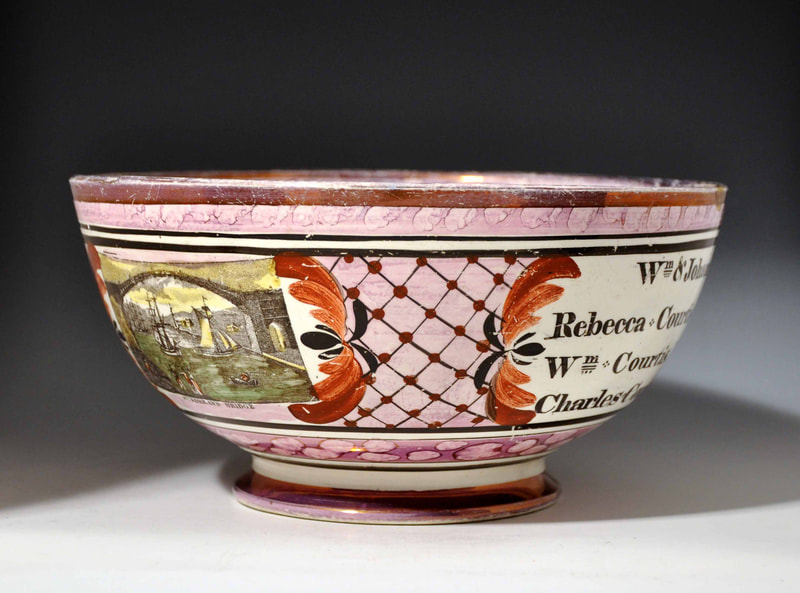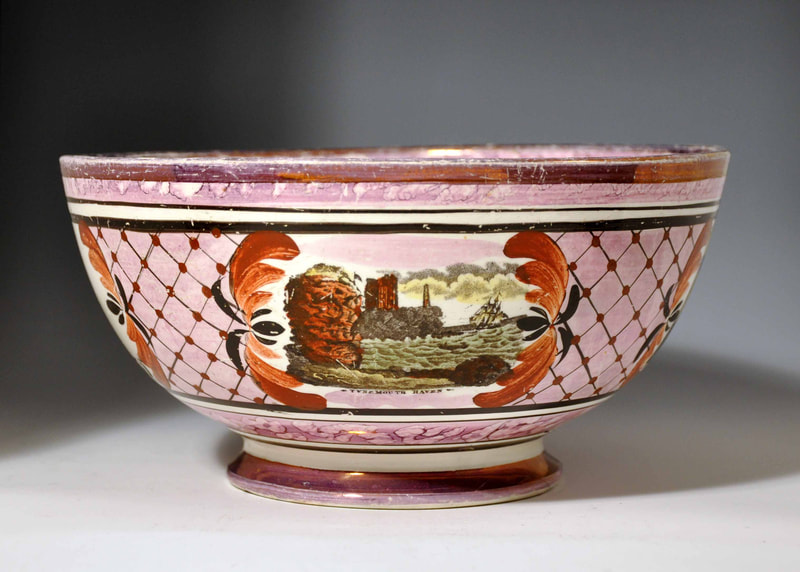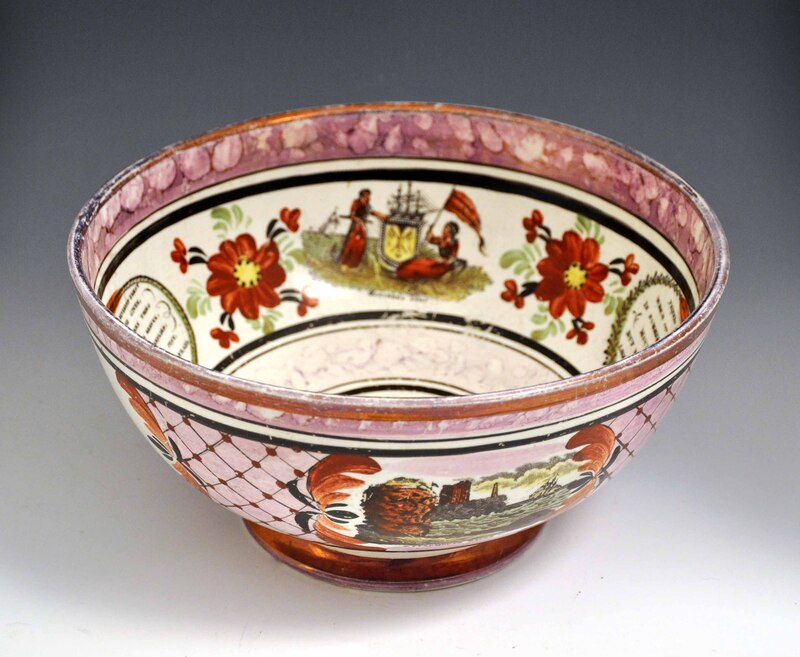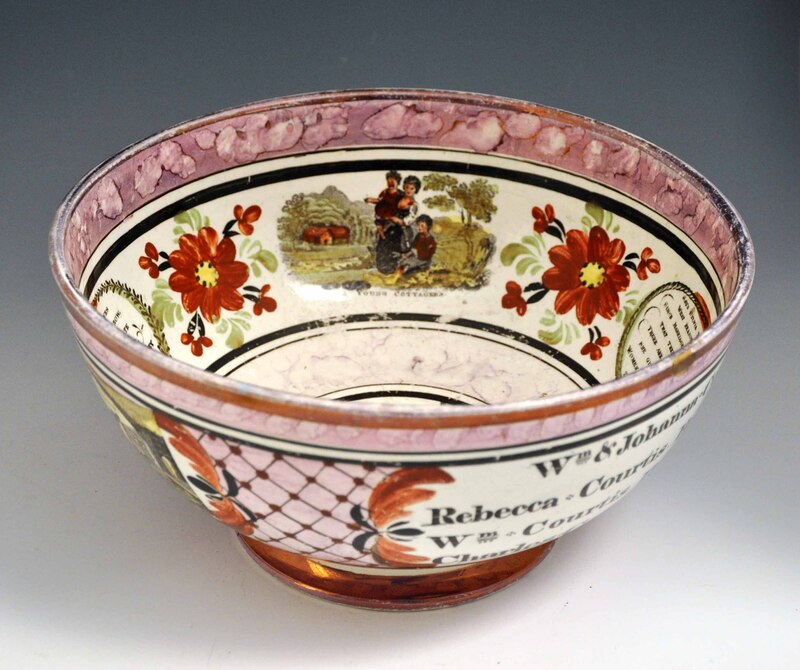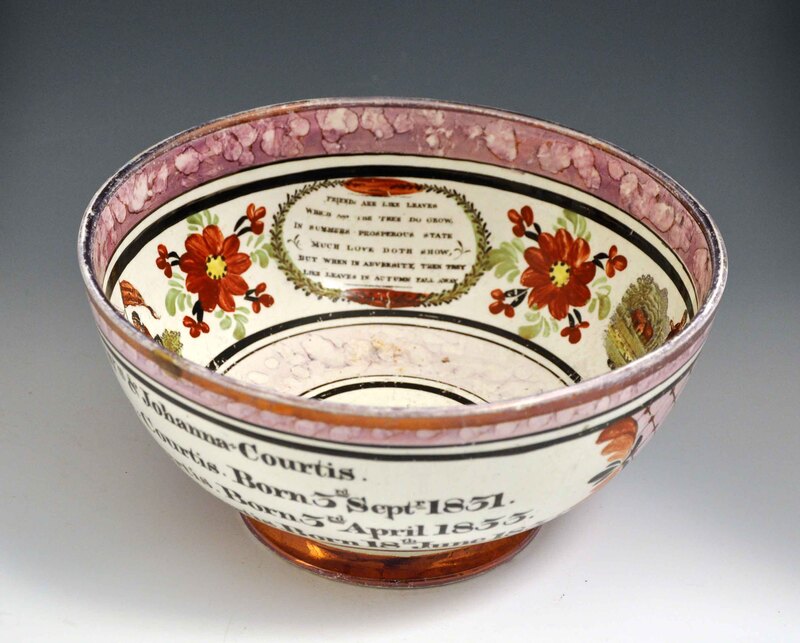Success to the Tars of Old England... – Tyneside
Cornfoot, Carr and Co, 1832–1838 – North Shields
A rarer titled version of the transfer attributed to North Shields on the basis of the two 'C, C & Co' impressed plates below. The distinctive lustre decoration on the handle of the jug, terminating in several horizontal brushstrokes, was used in North Shields throughout the 1830s and into the 1840s. (See the end of this page for titled examples attributed to Robert Maling.)
The same titled version on a small jug with black over-enamels to the sails on the transfer, again typical of North Shields. Beneath it two plates, also both with black sails, and a 'C, C & Co' impress to the reverse.
Attributed to Robert Maling, Ouseburn Bridge Pottery – 1820s
A different rendering of the subject attributed to Robert Maling with decoration typical of the 1820s.
Attributed to Robert Maling, Ouseburn Bridge Pottery – 1830s
A green-flecked pink-lustre jug with the transfer from c1830.
Untitled versions with small ship – Tyneside
Cornfoot, Carr and Co, 1832–1838 – North Shields
A plate similar to those above with an untitled version of the small ship transfer and an impressed mark 'C, C & Co'.
Attributed to Cornfoot, Carr and Co, 1832–1838 – North Shields
This more common, untitled version of the transfer was used over a long period. The jug below has an inscription for 1833. The marks on the handle are relatively neat.
Another jug below with similar decoration and an all but erased factory mark of an earlier North Shields partnership, 'Collingwood & Beall'. C,C & Co apparently repurposed an old transfer plate in the 1830s.
The Loss of Gold transfer on this bowl also has an erased 'Collingwood & Beall' printed mark.
The transfer on a jug with an inscription for 1834, and black enamels painted over the sails of the ship transfer.
Three small jugs with the transfer, coupled with religious verses. The first, although with an inscribed birth date of 1816, was most likely given as a first communion present (c1830) or coming of age present (1837).
All three jugs have the signature North Shields lustre marks on the handle.
Below, three eel pots or butter dishes wit similar enamelling to the transfers as the 'Elizabeth' jug above. The second has green handles (lugs).
Attributed to Carr and Patton 1838–1846 – North Shields
This variation of the transfer (left) is very similar to the one above (right), except that to the right of the ship there is another small sail in the distance. The leaves are more heavily shaded and there are more rows of dashes on some of the sails. These details could have been added when the copper plate was re-engraved to restore clarity, or the transfers could come from two different copper plates.
The transfer left above comes from the first jug below with a representation of Hope under the spout. The second jug below has the Rich Widow / Fortune Hunter transfer, and the third has what appears to be a highland shepherd.
The transfer left above comes from the first jug below with a representation of Hope under the spout. The second jug below has the Rich Widow / Fortune Hunter transfer, and the third has what appears to be a highland shepherd.
Again, all three jugs have the signature North Shields lustre marks on the handle.
Two jugs with the a transfer titled 'Shepherdess'. The first with a blue foot unique to items from North Shields.
The jug below is smaller with a bright green enamel.
The darker lustre on these jugs and the slop bowl below suggests the Carr and Patton period.
The transfer appears on an eel pot, which unusually has no lugs / handles.
Attributed to Carr and Patton 1838–1846 – North Shields
In the early 1840s, Carr and Patton started to produce more modern looking lustre items. The enameller of this jug moved to Dixon's Garrison Pottery sometime before 1850, making North Shields and Garrison items from this period hard to distinguish. However, this ship transfer is specific to Tyneside and doesn't appear on Dixon items.
The lustre decoration under the ship on this bowl is again typical of the enameller who decorated the jug above, so I would put it around the same date.
Attributed to John Carr and Son, North Shields
The transfer on the bowl is from the same copper plate as the items above and below. The lustre enamelling lacks the finer embellishments of the items above, so I am guessing it was made c1850.
This appears to be a later imprint from the same copper plate as the bowl above. These heavier imprints appear on later items.
Below, a degraded version of the transfer on the inside lip of an unusual and profusely decorated wash ewer.
John Carr and Sons, North Shields – with Seaham transfers
This bowl has a Mariners' Compass and verse transfers from the same copper plate as the Seaham-attributed items. However, the bowl was likely made after that pottery's closure, which appears to be c1852. The London impressed mark was used by several Tyneside potteries when making wares for a London retailer. So the bowl below is likely North Shields, c1860.
A more typical Carr & Sons jug with the small ship accompanied by a masonic transfer and verse.
A nice strong imprint of the transfer on a mug with a dated inscription for 1854.
Attributed to John Carr and Son, North Shields
This bowl, again with a London impressed mark, has a transfer almost identical to the one above, except that there is a small sail on the horizon to the right of the ship. This bowl has the Great Eastern Leviathan transfer, so dates from c1860.
Attributed to John Carr and Son, North Shields or Ball's Deptford Pottery
Both John Carr & Sons and Ball's Deptford Pottery were operating in the latter quarter of the 19th century when these rolling pins were made. Ball's appears to have acquired moulds and transfer plates from Carr, so it is hard to attribute these items.
Another example with typical Carr transfers, but with some printed in blue.
Redhead, Wilson & Co, Forth Banks, Newcastle Pottery – 1833–1838
A small jug from the Newcastle Pottery with typical yellow band decoration from the 1830s.
The transfer appears in the centre of this spectacular Newcastle Pottery bowl, also from the mid 1830s.
